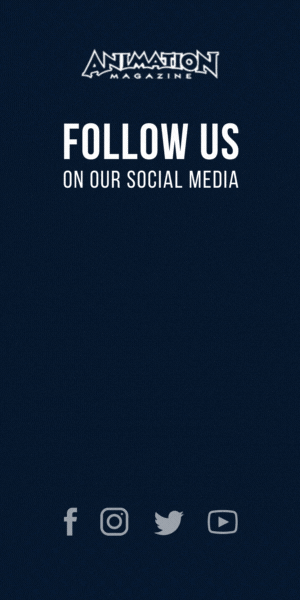
Animation Development: From Pitch to Production by David B. Levy (Allworth Press, $24.95). If you need a savvy insider to walk you through the maze of TV animation development, David Levy is your man. Included in this handy paperback are realistic tips from how to create the perfect pitch for a TV toon to setting up meetings, forming partnership, getting legal representation and agents, and how to live through the day-to-day challenges of taking your idea from the drawing board to the small screen

Animation: The Archive Series (Disney Editions, $50). If you enjoy witnessing how the masters of the art form can make magic happen with a few exquisitely drawn lines on paper, then you must have this book in your library. Over 270 drawings by the likes of Ub Iwerks, Ben Sharpsteen, Hamilton Luske, Grim Natwick, Art Babbitt, Frank Thomas, Ollie Johnston, Milt Kahl, Marc Davis, Ward Kimball, Eric Larson, Les Clark, Wolfgang Reitherman, Clyde Geronimi, Glen Keane, Andreas Deja and Eric Goldberg are featured in this toon aficionado’s dream collection.

The Animator’s Survival Kit: Revised Edition by Richard Williams (Faber & Faber, $30). If you’re hungry for rock-solid tips on animation’the type of advice you’d get if you were sitting right next to the Oscar-winning director of Who Framed Roger Rabbit‘this is the book for you! The latest version of this popular primer also includes tips on CG animation, stop-motion and animation for the Web. Regardless of the technology or the methods of the art form he addresses, Williams’ natural storytelling gifts shine through.

The Art of 3D Computer Animation and Effects by Isaac Kerlow (Wiley Publications, $65). When you’re looking for information about the art and technology of CG animation, Isaac Kerlow is your go-to man. The knowledgeable author of this richly illustrated book doesn’t leave any stone unturned and manages to include all the important milestones and devotes ample space to the shorts, features and series that have made an impact on the computer animation landscape over the past two decades. And he has the knack to make complex material fun to read and understand. Armed with this well-researched tome, you can bravely venture into the most challenging corners of the CG universe.

The Art of The Princess and the Frog by Jeff Kurtti (Chronicle Books, $40). Now that we’ve all seen Ron Clements and John Musker’s charming movie, why not fall in love with the amazing drawings, storyboard art and color backgrounds that brought the fairy tale to life? Mark Henn, Eric Goldberg, Rik Maki, Armand Baltazar, Bill Schwab, James Aaron Finch, Ian Gooding, Sue C. Nichols and Chris Appelhans are some of the talented artists and designers whose work is represented and are quoted in this handsome package. Just another sterling piece of evidence that we are all living in the new Golden Age of Animation.

Drawn to Life, Vol I and II by Walt Stanchfield, edited by Don Hahn (Focal Press. $29.95 each volume). Stanchfield was dubbed the Mark Twain of Disney studios, the man who electrified the animators with his simple, yet timeless lessons on drawing, animation and observing life for over two decades. Last year, Hahn gave us all a huge gift by helping put together these much-loved notes in two well-illustrated paperbacks that can be enjoyed by professionals and amateurs alike.

How to Make Animated Films by Tony White (Focal Press, $49.95). A highly respected teacher who likes to remind his students of the classic principles of animation, White sprinkles his master class with helpful suggestions and reminders of techniques that have been used by both the Western masters of the genre (Pixar helmers) and the Eastern gods of anime (Miyazaki). He also delves into topics that will come in handy in 3D animation and the digital milieu. The lavish tome includes numerous illustrations, sidebars, step-by-step guides and a DVD featuring animated movie samples and excerpts from his lectures. Almost as good as having him as your private tutor!

The Illusion of Life: Disney Animation by Ollie Johnston and Frank Thomas (Disney Editions, $60). Seriously, has there ever been an animation lover in this world who doesn’t think this book is the best thing that has been written on the subject? Frank and Ollie, two of the most famous Nine Old Men of Disney give the world their take on how the studio created classics such as Snow White and the Seven Dwarfs, Bambi and Pinocchio. Not only do readers get a fine history of Uncle Walt’s studio, they also learn about the process of traditional animation from two of the biggest experts in the field. Oh, and let’s not forget the excellent sketches, storyboard art and lovely photographs.

The Making of Fantastic Mr. Fox by Wes Anderson (Rizzoli Books, $35). This one is more than just a collection of sketches from the acclaimed stop-motion gem’it really feels like an exquisite scrapbook put together by the meticulous, creative director. There is ample space devoted to Roald Dahl, who wrote the children’s book on which the movie was based, as well as illustrations, photos of the many sets and puppets, as well as full chapters on each of the central characters. The charms of this cunning fox are certainly hard to resist.

Timing for Animation, Second Edition by Harold Whitaker & John Halas, edited by Tom Sito (Focal Press, $29.95). We’ve got the amazing Mr. Sito to thank for updating this classic primer which highlights all the essential techniques used by animators with awesome illustrations and straightforward pointers. The revised edition includes timing for digital production, digital storyboarding in 2D and 3D, After Effects and other new material. Keep this one right by your workstation!







 Win a Funko X Lilo & Stitch Prize Pack!
Win a Funko X Lilo & Stitch Prize Pack! 


